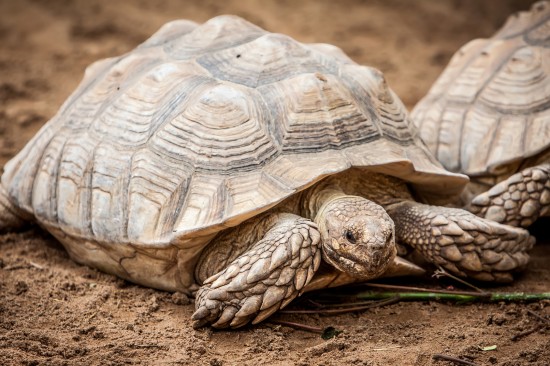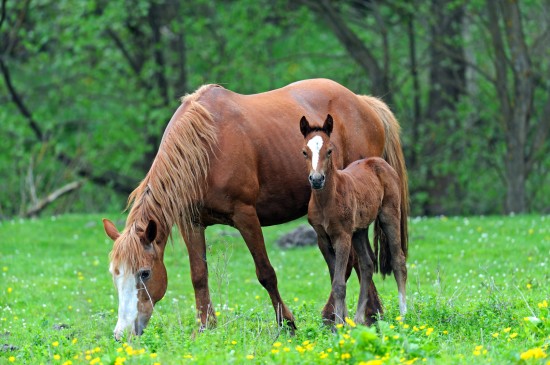Fun & Interesting Facts About Tortoises

Tortoises are magnificent creatures even when they are tiny little things and contrary to what most people think, when a tortoise wants to put a spurt on, they can move pretty fast. Many a pet tortoise has been left for a few minutes in a back garden and managed to scuttle off into the distance before their owners realise it!
Here are some fascinating and fun facts about tortoises you may not already know about
- A tortoise's shell is made up of 60 different bones all connected to each other
- The top of a tortoise's shell is called a “carapace”
- The underside of the shell is called a “plastron”
- The carapace and the plastron of a tortoises shell is connected by what is known as a bridge
- Tortoises can retract their heads and all their limbs including their tails into their shells when they feel threatened or attacked by predators
- Tortoises have extremely strong mouths but no teeth instead they have horny type beaks
- Tortoises have good all round vision and a very good sense of smell
- Tortoises are cold-blooded – they draw heat from their environment and are more active during the day than at night
- Tortoises can live a very long time, some to the ripe old age of 150. However, the average age a tortoise can live to ranges from 90 to 150 years
- Tortoises are what is known as herbivores, they eat grass, ferns, flowers, tree leaves and fruit
- Female tortoises are usually larger than their male counterparts
- Females dig burrows in which they can lay up anything from 1 to 30 eggs
- A male tortoise has a longer tail than that of a female, which is one way of sexing them
- When baby tortoises break out of their shells they're called hatchlings
- Tortoise eggs incubate between 90 to 120 days to hatch out
- Tortoises hibernate in the winter time and before they do, they starve themselves so their stomachs are empty ready for hibernation
The giant tortoises of the Galapagos Islands are famous the world over and each of the islands has it's very own species. At one time there were 15 species of tortoises on the Galapagos Islands but today there are just 11 different species on the islands.
Here are some more interesting facts about the tortoises
- A Saddle Back tortoise has a notch at their necks that allows them to lift their heads up high. This allows them to eat any vegetation that's high off the ground
- Tortoises with domed shaped shells graze on grass and any low growing vegetation
- The oldest Giant tortoise ever recorded lived to the ripe old age of 152!
- Giant tortoises can grown up to 5 feet in length
- Giant tortoises can weigh over 500 lbs
- In the 19th century, sailors used to eat the tortoises found on the Galapagos Islands because it was one of the only source of fresh meat they had on long voyages
Giant tortoises are truly magnificent and they are creatures of habit. A female will return to the same place every year to lay her eggs. Tortoises can also survive incredible lengths of time with very little food or water.
More interesting facts about giant tortoises
- Because a tortoises shell is rigid and hard, it does not let tortoises expand their chests to breath like other animals and humans, so the tortoise has developed a special set of muscles that assist them with their breathing
- The official name of a giant tortoise is “Geochelone Elephantopus”
- The giant tortoise has many natural predators which include wild dogs, rats, cats and pigs that attack their eggs and the young hatchlings. Adult giant tortoises face a bigger threat which is man!
- Tortoises are referred to as “land turtles” and come from the family of Testudinidae and the order of Testudines
- Tortoises are different to turtles because they only live on land and do not have flippers like turtles do
- The Leopard tortoise weigh anything from 30 to 50 lbs and measures around 15 to 18 inches long
- The lifespan of a Leopard tortoise is anything up to 90 years
- Leopard tortoises like their relatives the giant tortoise are herbivores, living on a diet of leaves, ferns and grass
- Tortoises are very susceptible to catching parasites and they are prone to catching pneumonia
- A healthy tortoise will have clear, bright and fully open eyes, they are alert and have no discharge coming out from them
- Tortoises need to be held with two hands, one underneath it as a support because they stress out if they feel any air beneath them
- There are around 40 different species of tortoise found around the world
- One of the most famous stories in the world is called the “Hare and the Tortoise” and is one of the Aesop's Fables
- The most endangered species in the world are the Yellow-footed, Brazilian Giant, Forest, South American, and the South American Yellow-footed Tortoises
Keeping tortoises as pets is great, and kids really do enjoy having them around. The great thing is that when well looked after in the right environment, tortoises can live for a very long time, which means it's a very long term commitment if you are thinking about getting one. You can adopt a tortoise from many rescue centres and the tortoise trust and offer a lovely creature a second chance in a new home.
It's important to find out everything about the species before you get a tortoise and then to set up the environment to suit them, remembering to invest in the correct lighting system that gives off natural light so you avoid any health problems. Tortoises also like to hibernate so it's vital to find out all about this process and then not to disturb your pet when they do go into hibernation, and then be ready for when they wake up again!


 Dog Training Secrets – How To Prevent / Stop Behavioural Problems
Dog Training Secr
Dog Training Secrets – How To Prevent / Stop Behavioural Problems
Dog Training Secr
 Do Horses Inherit Character Traits?
Do Horses Inherit
Do Horses Inherit Character Traits?
Do Horses Inherit
 German Wirehaired Pointer Hereditary Health And Longevity
German Wirehaired
German Wirehaired Pointer Hereditary Health And Longevity
German Wirehaired
 Dealing With Canine Nightmares
Dealing With Cani
Dealing With Canine Nightmares
Dealing With Cani
 Working Trials - Canine Competition
Working Trials -
Working Trials - Canine Competition
Working Trials -